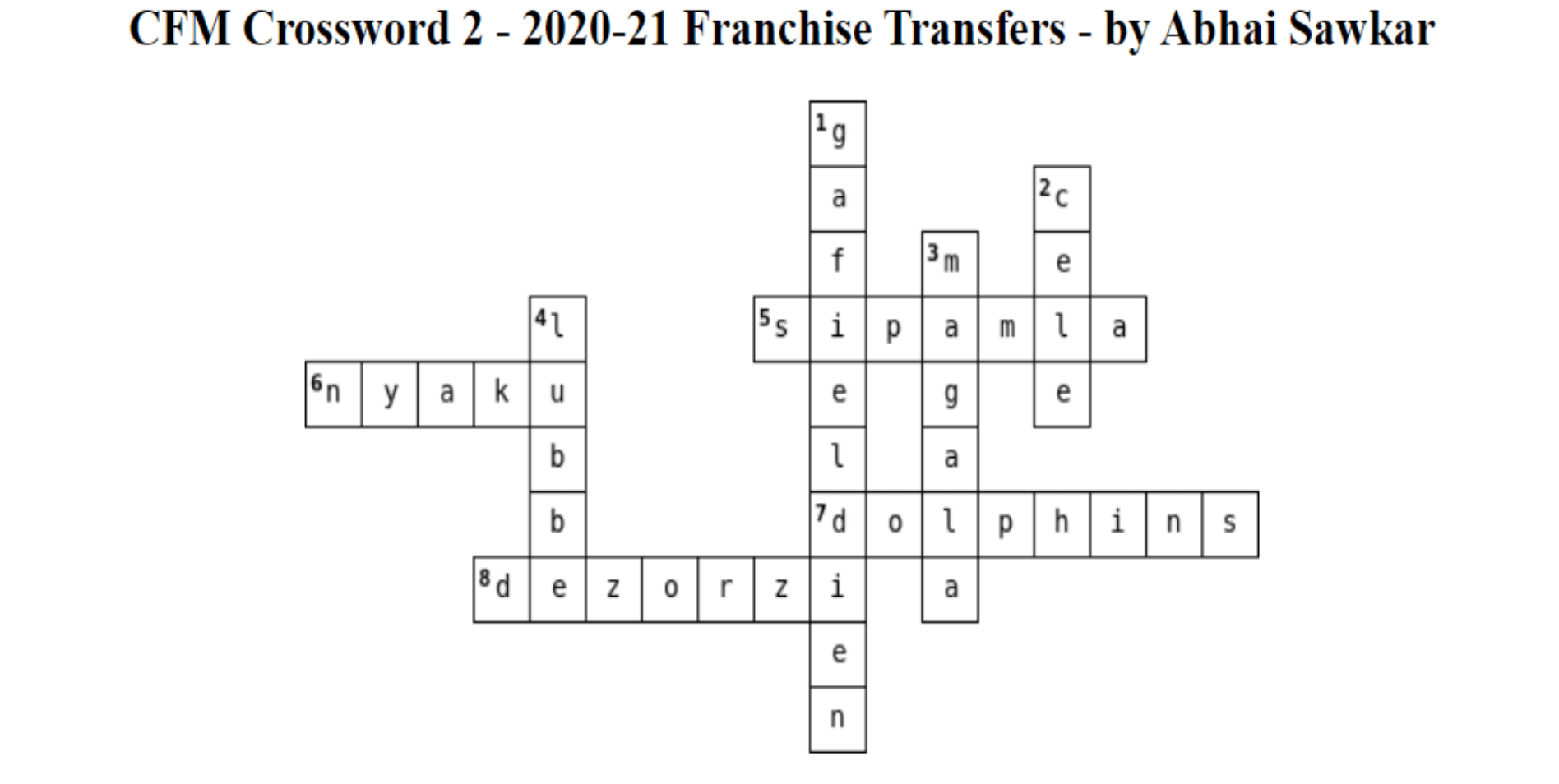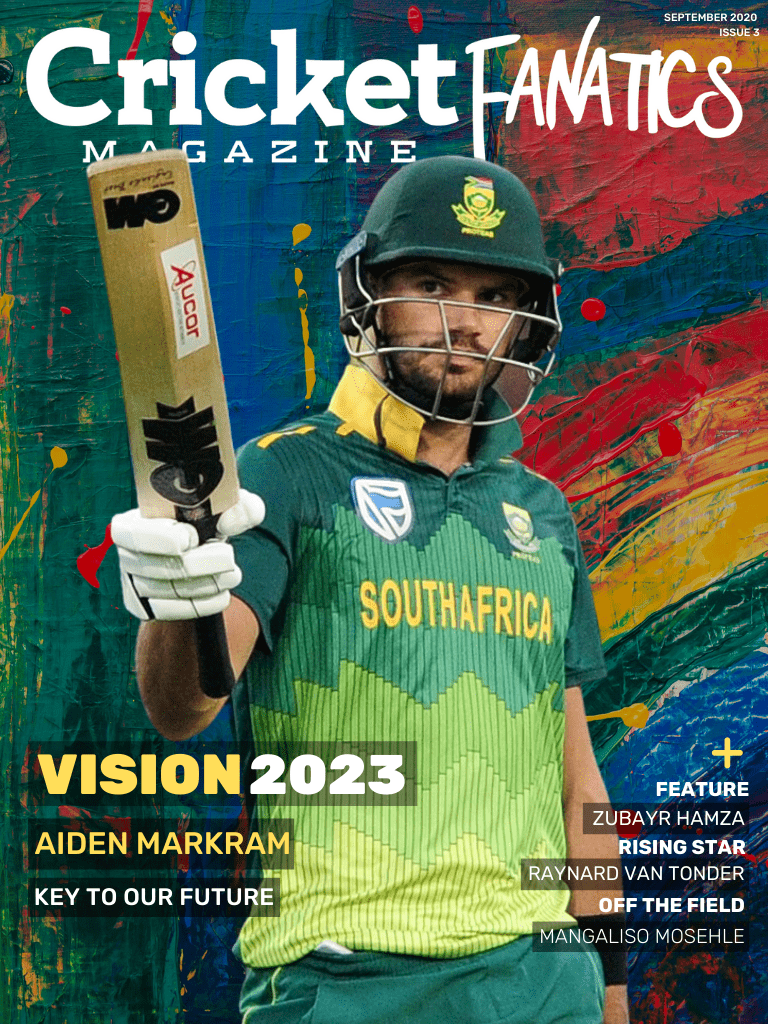
Table of Contents
EDITOR'S NOTE
PRIORITISE VISION 2023
Khalid Mohidin
Founder and Editor - Cricket Fanatics Magazine
With retirements to key Proteas players, CSA should focus on their succession plan for the 2023 edition by breeding in the next generation with immediate effect.
The Proteas were battered, bruised and humiliated in the last World Cup. They were knocked out of the tournament with two games to spare and lost six matches out of eight which confirmed their premature exit from the tournament, despite a victory against Sri Lanka in their penultimate fixture.
Fair criticism inevitably followed, with question marks emerging over the Proteas’ preparation for the tournament as well as suggestions of poor selection decisions and game plans. The decision to appoint a new coach two years out from the World Cup and then aiming to build a World Cup-winning side was always risky, too risky as it proved to be.
There was also a lack of quality performances by the experienced players in the squad. Hashim Amla, Faf du Plessis, David Miller and JP Duminy all struggled for runs in the must-win games for their side which left the Proteas panicked when chasing or attempting to set out-of-reach totals.
We could go on and rattle off a long list of what went wrong during this World Cup campaign, but this won’t benefit anyone. Instead, with retirements hovering over Amla and Du Plessis, let’s briefly scan through some options to kick-start the Proteas’ succession plan.
It’s time now to blood a young ODI side that has the right mentality and attitude for the series in India. We should identify these players and allow them the chance to grow as a team. Forget about World Rankings and being No. 1 heading into the tournament, focus on building player confidence and form. The winning will take care of itself.
Players who have proven to have a natural winning mentality at a domestic level should receive first preference and be given the time to learn the intricacies of international cricket. After two seasons of international experience, there should be no reason why these players won’t grow in stature by playing at the highest level.
Don’t get me wrong, I’m not saying just pick any youngster in the squad. They need to be in form at domestic level and if so we shouldn’t be afraid to give them a chance over experienced players.
Zubayr Hamza, Kyle Verreynne, Bjorn Fortuin, Ryan Rickelton, Janneman Malan, Jason Smith, Eddie Moore and Wiaan Mulder are a few players that are on the national selection radar. Throw some other young players like Raynard van Tonder, Marques Ackerman, Grant Roelofsen, Sinethemba Qeshile, Gerald Coetzee, Marco Jansen, Corbin Bosch and Tony de Zorzi who have shown good form into the mix, and you are building a squad that's creating chemistry, culture and are learning as a cohesive unit.
Experience, however, is influential and the Proteas can bank on the lessons that were learnt by Kagiso Rabada, Lungi Ngidi, and Andile Phehlukwayo at this World Cup. Quinton de Kock will also still be in his prime in 2023 and will add valuable experience to the environment.
The preparation for the next World Cup and the next Test Championship should begin right now by identifying the next generation of talent who can enhance their quality ahead of the next grand showpiece.
This issue takes a peek into the future, by identifying young talent who can carry our game forward.
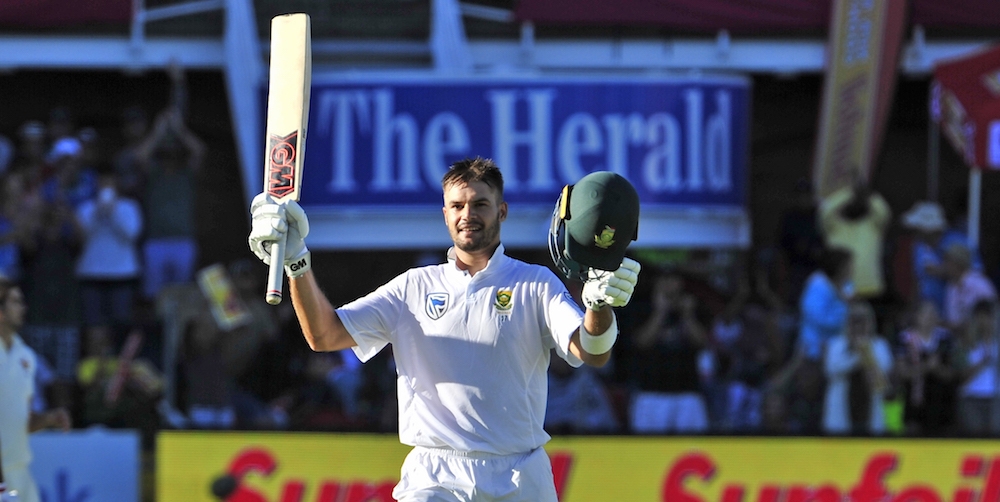
Markram key to Proteas' future
By Khalid Mohidin
If you ever get the opportunity to sit down and talk with Aiden Markram, you will notice that you are not talking to just any ordinary cricketer.
His humble disposition, positive outlook, respect for his peers and in-depth understanding of South African cricket makes him the perfect custodian of our game.
It was on 24 December 2016 when I had my first-ever conversation with Markram. He had just made his breakthrough onto the franchise scene, after a short sabbatical that he took to focus on his studies, shortly after becoming the first SA U19 captain to lift the U19 World Cup title in 2014.
He made an instant impact in his first franchise season as an opener for the Titans in 2016/17 and was crucial to their strong challenge for silverware. He racked up 354 runs at an average of 118.00, scoring consecutive centuries and a fifty in the Titans’ first three games of that campaign.
I will never forget what he told me back then, after his amazing run of form: "I’m going to try work towards living out my dream of becoming an opening batsman for the Proteas."
His goal was set, and he went on to pursue this with intent. He finished the season with 565 runs in seven games that season.
Although the Titans narrowly ended runners-up to the Knights in the 4-Day competition, Markram made the first step towards that dream. An SA Invitational call-up followed and the season thereafter, he became the answer to the Proteas’ opening conundrum, by replacing Stephen Cook at the top of the order.
His Proteas debut came against Bangladesh in 2017 and Markram looked on course to completing a maiden ton, but he was run out on 97. Dean Elgar was blamed by supporters for robbing Markram from achieving a century on debut and it was evident how distraught Elgar was about the situation through his subdued celebration when he reached his century two balls later.
Markram's response in his first-ever TV interview as a Protea was an early indication of his maturity and natural leadership quality: "I chatted to him [Elgar] at tea and said: 'No-one is to blame. It's part of the game and you need to carry on for the team.'"
It was clear that his positive mindset was genuine, which he backed up in the second Test by scoring a classy maiden century that was a full representation and expression of his quality, talent and self-belief.
His next important milestones were a workman-like 94 against India, and two big centuries against Australia, in what was a bumper three months of back-to-back Test series cricket, as he solidified his spot as the Proteas’ opener.
Although he has struggled since then – especially during his two trips to the sub-continent (against Sri Lanka and India) – Markram’s talent, and the value he brings, should not be forgotten.
But more so, his character should not be ignored. In an episode of the On Lockdown Series, Markram owned up to his mistakes and revealed how his time off due to injury has allowed him to refocus on his mental game.
The drive now has shifted slightly for the 25-year-old. Having missed the England series, he aims to fight his way back into the Proteas Test side and make that position at the top of the order his own, with a view to becoming a regular fixture in the 50-over and T20 sides.
In the interview, Markram made it abundantly clear that he must earn his way back into the team through performances, showing the utmost respect for Pieter Malan who replaced him in his absence.
His attitude in difficult times, as well as his humble reaction to his achievements, are testament that Markram is a player the Proteas can trust to lead them to the summit of international cricket again. For me, he holds the key to a desired prosperous future for South African cricket.
His leadership qualities, positive attitude, respect for his teammates, high standards, and his ability to bounce back, are all essential traits of a quality player. Markram remains mature beyond his years and his humanistic qualities make him well respected and admired by his competitors and peers.
South African cricket is in a transitional phase and needs to find a player who can lead them back to No. 1 status. After retirements to key experienced players, the succession plan starts now, and Aiden Markram possesses all the qualities to steer the Proteas to their desired goals.
Get More Clients With Cricket Fanatics Magazine
Cricket Fanatics Magazine has the visibility, infrastructure, expertise and toolset to automate your marketing and branding.
Book a Free Call to get expert advice on how to take your Online Marketing Forward.
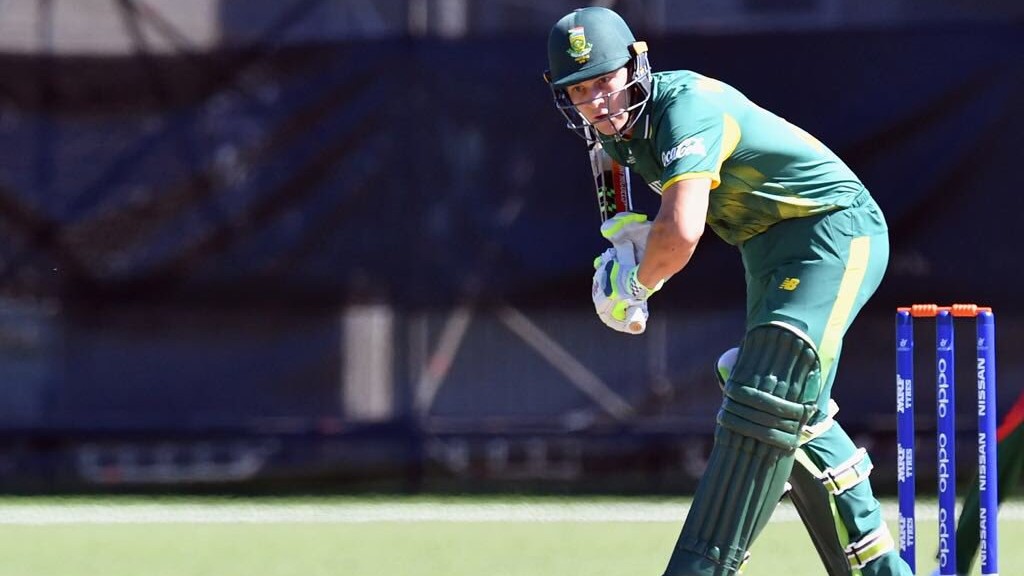
LOOKING INTO THE FUTURE: CREATING TOMORROW'S LEADERS
By Chris Chiwanza
"I will be captain of my country." According to legend, this is what a young Graeme Smith wrote on a note that he placed under a fridge magnet at age 12.
Captaining the team is the dream of almost every young cricket player. The captain is to cricket what the quarterback is to American Football.
In American Football, the quarterback is often considered to be the most important position, not only on the team but in the sport as a whole. As a result, the spotlight is always brighter on the quarterback than any other position or player.
Cricket is no different. As Sourav Ganguly famously remarked, cricket is a captain's game. The captain has a say on who is selected, what tactics to employ and determines the direction the match goes, unlike in many other team sports where the coach can affect the game during play.
Once the players are on the field, it's all on the captain. And, just like with the quarterback in American Football, the spotlight is more intense on the captain. And, by extension, the captain gets all the attention, all the praise when a team does well.
Therefore, it is no surprise that almost every young cricket player grows up with that dream of captaincy. And again, like in American Football where quarterbacks assume their position at a tender age, cricket captains start their captaincy journeys early on.
For instance, consider Nasser Hussain who captained England between 1999 and 2003, and was declared to have been the best captain England had had in 25 years by Simon Barnes in 2003.
He was identified as a captain at Under-13 level where he started leading his age-group teams.
More often than not, the youngsters who get picked to be captains are, either those that display a better tactical understanding of the game or those that consistently outperform their teammates or both.
As a result, tactical excellence and consistently outperforming or consistently leading by example is what has become the definition of the perfect captain in the minds of all young cricketers. And they aspire to that.
However, maybe it is time we had a relook at the type of cricket captain who should lead our teams and possibly add more flesh to the one-dimensional model that is currently in existence. Readjust the lens through which young captains view their duties to the team so that they are better equipped to lead a diverse group of players.
On August 22, 2020, a 32-member Proteas men squad concluded what Cricket South Africa termed "a successful camp." At the core of the culture camp were discussions around team values, belonging, empathy, respect and rules of engagement.
The camp couldn't have come at a better time, with all that is happening around the Proteas. While most of it is at the administration level, certain subjects have been closer to home and sent shockwaves among players and former players.
Recently, Makhaya Ntini revealed that he often felt lonely, alienated, as an outsider in the Proteas team during his playing days. Graeme Smith, who was captain at the time, professed that he had never noticed.
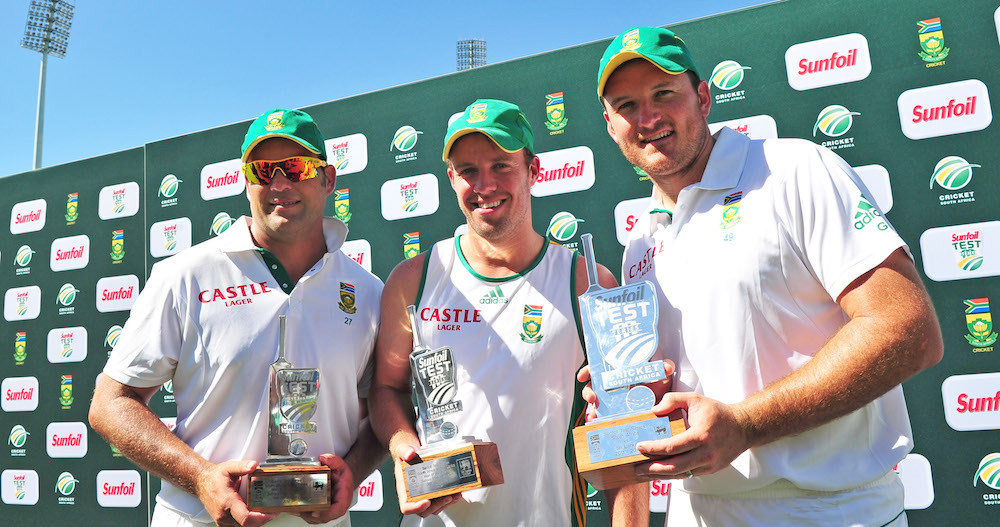
That admission by Smith, one of the country's most successful captains is a blemish on his otherwise stellar tenure. While he was astute tactically, and almost always led from the front, his deficiency was in man-management and understanding the players around him.
This is a result of how he was socialised as a young player and a young leader. After all, national captains lead in the manner they are raised to lead and not in the manner they should lead. Their conduct in adulthood is the result of what they were taught.
Others, like Australia's Tim Paine, unlearn what they learnt as young captains and grow into the type of captain described by former England captain, Ray Illingworth, in his 1980 book Captaincy: “ (a captain) needs the patience of a saint, the diplomacy of an ambassador, the compassion of a social worker, and the skin of a rhino.”
But, we cannot wait for the off-chance that they might self-correct. Therefore, if we are to have better future leaders who do not repeat the mistakes of their predecessors, we need to take a more intentional approach in developing their leadership soft skills. We have to create systems that set them on the right course early on.
The starting point would be to employ the approach of that which was told to me by former SA U19 coach Lawrence Mahatlane, who told me that above everything else, "Understanding how to deal with their teammates and getting the best out of them is a more important duty for the captain."
Over the past six years, Mahatlane has overseen the growth of players like Sibonelo Makhanya, Tony de Zorzi, Raynard van Tonder, Wandile Makwetu, Bryce Parsons and Wiaan Mulder. All of whom he has described as very capable, outstanding young leaders because of their leadership soft skills.
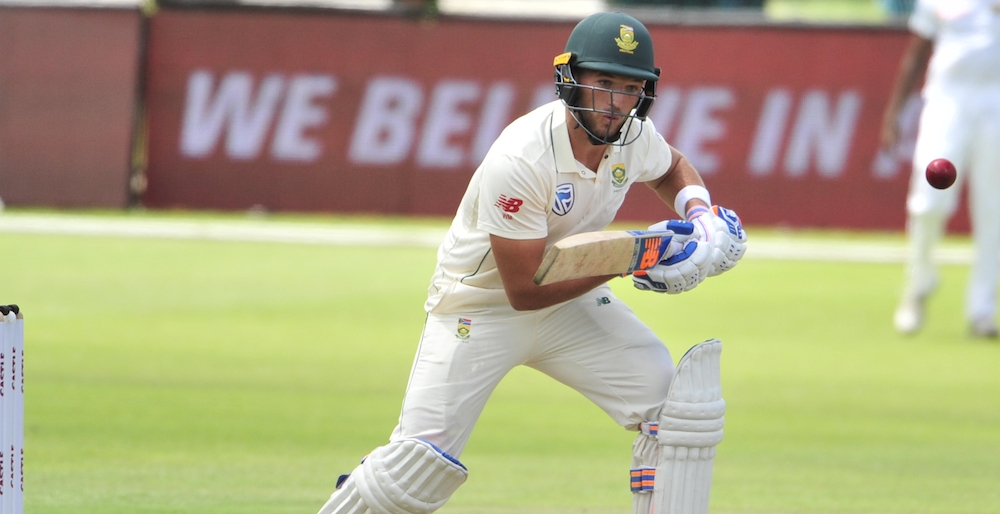
With such a pool waiting in the wings, the immediate future of the Proteas seems to be in good hands.
Several possible tools can be utilised to develop these soft skills of leadership. Over the past few days, I have seen some commentators suggest that age-group players should also have their versions of culture camps similar to the one the Proteas men's squad attended. The hope is that at these camps, they communicate more openly as individuals, which sets the platform for bonding.
Echoing the voices of the commentators suggesting culture camps for age-group cricketers, Lawrence Mahatlane said that it is imperative that players get the time to know each other and learn to respect each other's differences.
He also added that among other things, it is important to allow the captains to make mistakes and be able to learn from them.
When leaders know that they can make mistakes and do not lose their standing in the eyes of those around them, they embrace being vulnerable with others around them. And with vulnerability, they create strong feelings of belonging with others.
In teams where feelings of belonging are high, there is greater accountability, responsibility-taking and ultimately, empathy between teammates. But, it is only possible if leaders embrace a certain path.
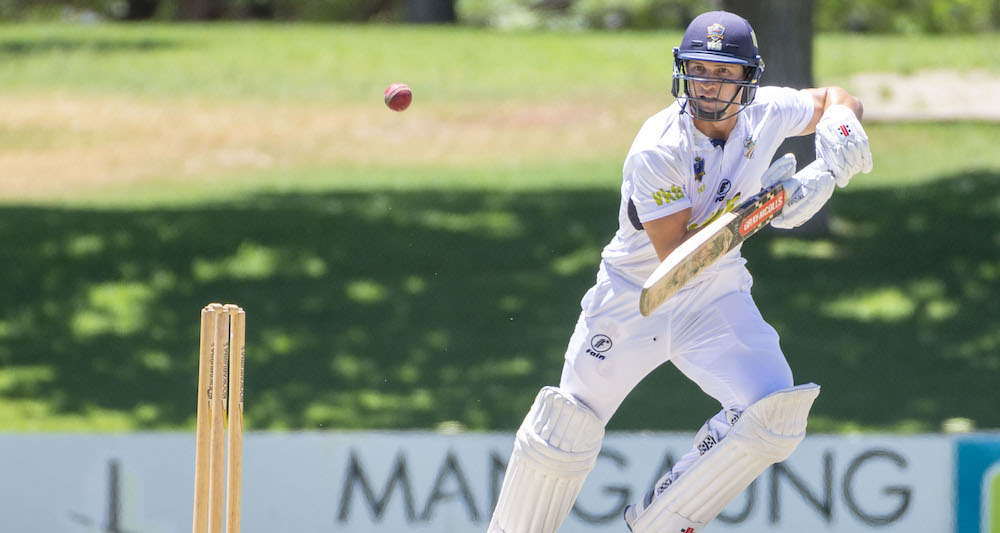
RISING STAR: RAYNARD VAN TONDER WANTS TO BECOME NO 1
By Marc Jacobson
Raynard van Tonder has held a bat ever since he could walk and, through the years, has progressed to become one of South Africa’s finer prospects in the middle.
The 21-year-old said when he was about three or four years old his father bought him his first bat, before cutting it in half and throwing the ball to him to serve as his first-ever ‘batting practice’.
Over the years, Van Tonder, who hails from Bloemfontein and who was schooled at Grey College, has made waves in the local cricketing fraternity.
Van Tonder represented Grey College’s 1st XI since he was a fresh-faced grade eight pupil, which is already a telling tale.
He went on to represent the South African U 19 side at two junior World Cups, in 2016 and 2018 – the first of which he was still in matric.
In the 2018 World Cup, Van Tonder captained the national side, led by example and scored the third-most runs in the whole tournament of 348, behind India’s Shubman Gill (372) and West Indies’ Alick Athanaze (418).
In that same tournament, he also struck the third-highest total by a South African in U19 ODIs when he smashed 143 – including 14 fours and 6 sixes – against Kenya.
That score still stands as the third-highest behind Quinton de Kock’s 146 against Pakistan in 2012 and Jacques Rudolph’s 156 not out against Nepal in 2000.
It also matched AB de Villiers’ knock of 143 against England in 2003, but Van Tonder’s allotted runs were scored quicker.
“Growing up, [I was inspired] by AB de Villiers and Virat Kohli and now recently I’ve really enjoyed watching Steve Smith,” a humble, yet ambitious Van Tonder told Cricket Fanatics Magazine.
“Those guys really inspired me to play cricket and from a young age, I just wanted to get out there and hit with the middle of my bat. Every time I do that, I just want to [keep my eye] in.
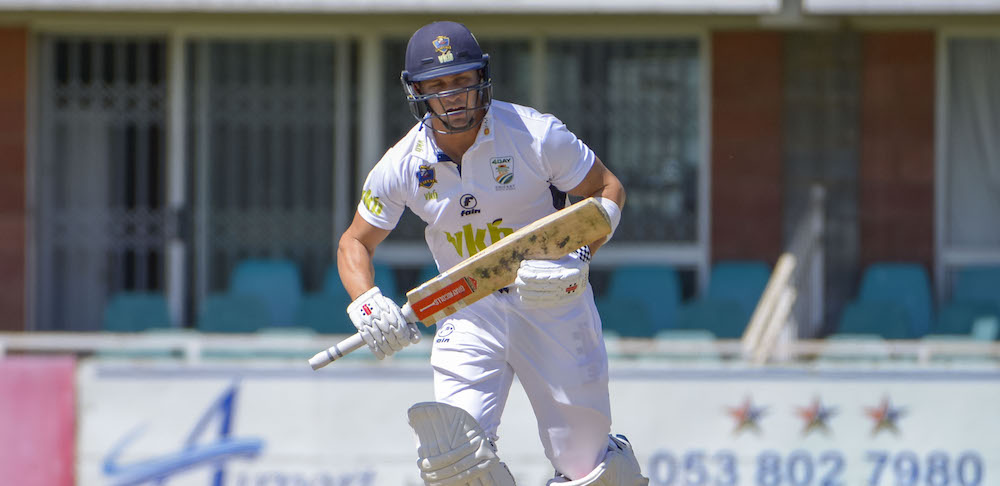
Van Tonder had also accumulated the second-most runs scored by a South African in all U19 ODIs, amassing 1 097 runs in his three-year tenure from 2016 to 2018.
He was second to De Kock’s 1409 but had scored the best average (49.86) out of any batsmen who had played in 20 innings or more.
Meanwhile, De Kock, the Proteas current captain and wicketkeeper-batsman, is Van Tonder’s present inspiration to reach the top of the sport.
The Bloemfontein local’s ambitions are far greater than his past achievements, though, and the shadows of former-cricketing greats and his childhood role models are evidently not too far cast.
“I definitely still want to play international cricket in all three formats and my main goal is to become number one in the world.”
The junior World Cups bore testament to what he was capable of in the greater scheme of things, Van Tonder insinuated.
“The experience of the World Cup was unbelievable – just to be able to test yourself against the world’s best at age-level and to see that you’re not that far off [from being the best].
“I felt like, from seeing other players play from other countries, that they aren’t that much better or different.
“Getting selected in the World XI team [that year] really gave me a lot of confidence heading into franchise and provincial cricket.”
Van Tonder’s performances in the current 4-Day Franchise Series for the Knights have been particularly off the dial, having outscored his rivals with a total 843 runs in 14 innings at a superb average of 70.25.
Edward Moore of the Warriors was second to him by a long shot, having totalled 705 runs with an average of 50.35.
“I’m really happy with my form in the red ball [format]. I had a really good start and fortunately, the team’s doing quite well as well, so hopefully, I can just continue with the runs heading into the last two games so that we can win the trophy.”
The Bloemfontein-based Knights have been particularly accommodating to him in his young career so far, Van Tonder added.
“The coaching staff and my teammates have all been really supportive. A guy like Keegan Peterson has been helping me a lot as he’s also been scoring many runs in four-day cricket. He was always available to speak to.
“Pite [van Biljon] has been really good as a captain, as well as some other guys. There are many I can name. They have been very important, especially with me coming in as a youngster.
“They have always helped whenever they could and I am fortunate to have proper teammates.”
The middle-order batsman has suffered a series of back-to-back ducks in his last two one-day games during the ongoing Momentum One Day Cup, but he made sure that those were merely just glitches.
“I don’t think there is a massive problem. I just think it is more about going in, getting a good start and making big runs. I can’t really say why I haven’t been scoring runs there.
“I had a better start to my senior career in red-ball cricket, but it’s not the end yet.”
Advertisement
Ezra Poole's Online Wicketkeeping Academy
Learn how to Master The Craft of Wicketkeeping Without Having to Hire a Full-Time Personal Coach.
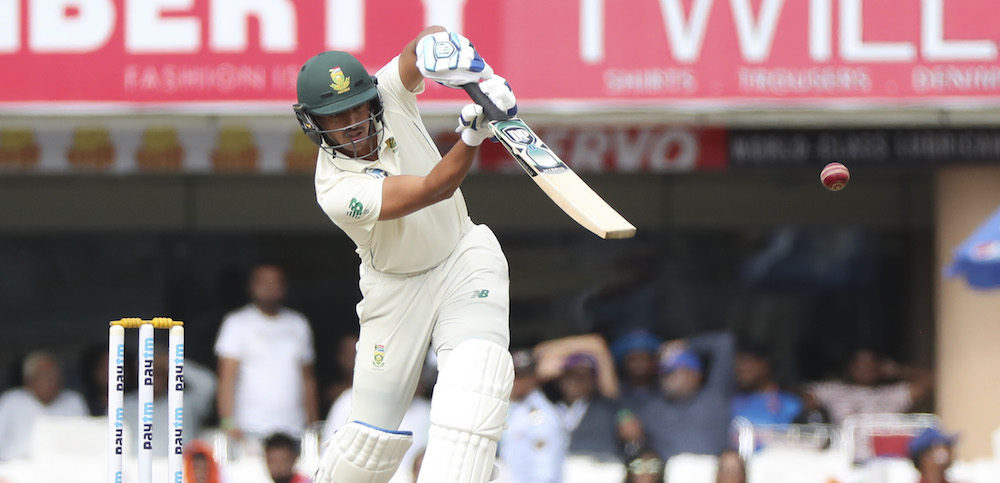
“I’M CONSTANTLY LEARNING MY CRAFT AND TRYING TO BECOME BETTER” – ZUBAYR HAMZA
By Nabeelah Fakier
Hard-working, dedicated and humble are just a few of the many words that can be used to describe Zubayr Hamza, as he aims to travel his own unique cricketing journey.
It hasn’t been an easy road for Rondebosch Boys’ High School alumni Zubayr Hamza. He’s had to carry pressure from the start of his career and fight hard to pave his journey. Some of the pressure included fans dubbing him as the next Hashim Amla.
Amla will always be remembered as a South African legend, and Zubayr Hamza will be the first one to acknowledge that, and although flattered by the comparison, wants to be remembered for his ability and unique journey.
To give a brief overview, Hamza has represented UWC Cricket Club, Western Province, WSB Cobras and made his debut for the Proteas, having earned every accolade to his name.
He became South Africa’s 100th capped player since readmission in the series against Pakistan on 11 January 2019.
This was followed by the England series where he felt he did not perform well enough and was dropped for the final Test at the Wanderers.
“Playing Test cricket was a dream come true. The team and staff were welcoming, accommodating and approachable,” he said exclusively to Cricket Fanatics Magazine.
“It was tough having not performed as well as I would have liked to but it was a positive experience nonetheless. Test cricket demands more of players in all aspects of the game and you’ve constantly got to adapt.
“I’ve learnt to focus on my strengths, continuously persevere to put in good performances and to stay true to myself and my style of batting.
“Growing up I enjoyed watching a very successful South African team.
“I appreciated different characteristics that players brought to the game, such as Hashim Amla’s humility, Jacques Kallis’ mental ability, Virat Kohli’s passion and the classiness of Michael Clarke.”
To be great and consistent in what you do, it helps to have people in your life to motivate and support you.
It’s no different for players. Having great influencers and a good support system can be an important element to your game.
“My family, friends and every coach along the way up to this moment in time, has been my major influencers.
“Ashwell and Faiek have helped the Cobras batters a tremendous amount over the past few seasons, of which we’ve individually reaped the rewards.”
Whilst the Cobras haven’t had the ideal MODC tournament, finishing last on the log, Hamza stepped up as captain and captaincy certainly suited him.
He finished second for the most runs scored in the Cup, with 582 in 10 innings.
“The opportunity to captain my home franchise has been an honour and a privilege,” he added.
“It comes with more responsibility and challenges, which I’ve enjoyed thus far. We had a tough season, unfortunately, but there have been plenty of lessons learnt.”
The right-handed batsman started his first-class career at Western Province and wasted no time battling his way into the Cobras side and becoming a key player in the 4-Day Franchise side.
Now it’s time for him to become a more recognised player in the shorter formats.
“By putting in consistent performances and stacking up the numbers, is how I will get recognised,” he said.
“I’m constantly learning my craft and trying to become better at understanding how to play different scenarios and formats.”
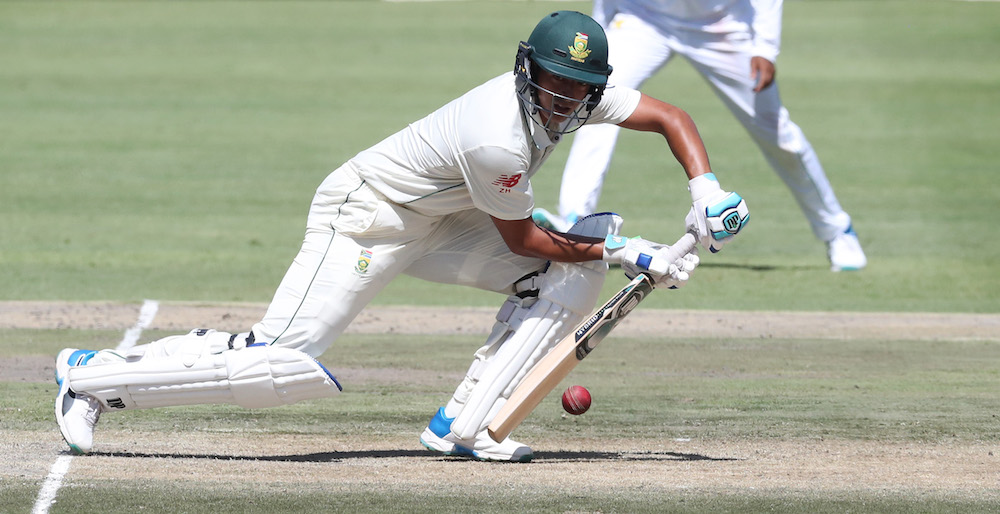
Every sportsman has standout moments in their career or moments which define their career, for Hamza his standout moment has been the opportunity to play for South Africa.
“A standout moment has been representing my country,” he said emphatically.
“I would say I’ve had a few career-defining moments every time I’ve been dropped. I’ve been dropped from both the Western Province and Cape Cobras sides in the past and I’ve used those experiences to find a way to perform at those levels.
“I admire the plenty other cricketers who have experienced this and gone on to be successful at whatever level they desired to end up playing.
“Hopefully, fingers crossed, I can find a way to do the same on the International stage if the opportunity arises again.”
Despite Covid19 epidemic shut everything down, including the domestic scene, we all had a jaw-dropping reaction for the list of Franchise transfers, keeping the fanatic hearts pumping through this sport-less time.
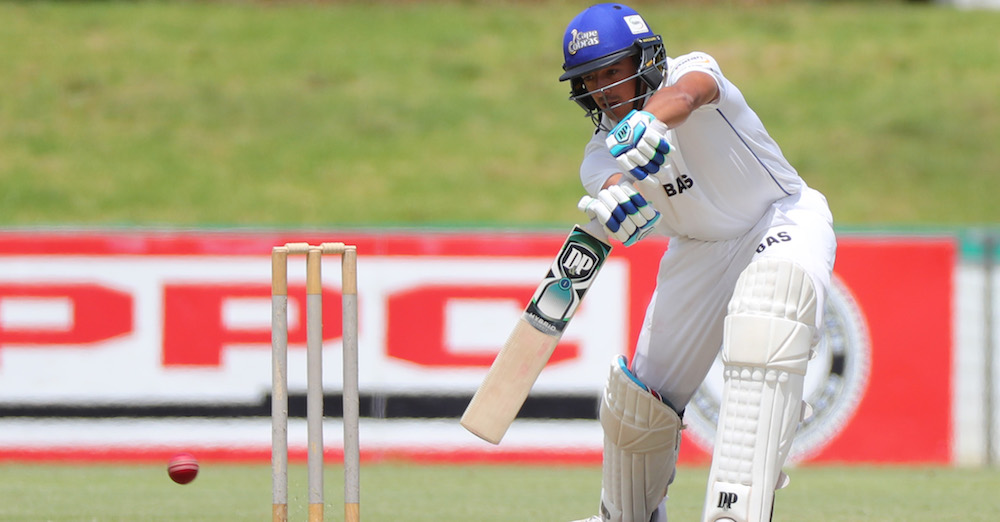
The Cobras added quite a few names to their repertoire with the likes of Tony de Zorzi, Corbin Bosch, Calvin Savage and Imraan Manack to name a few.
“There have been plenty transfers between franchises and every player has their reasons for moving,” said Hamza.
“With regards to the Cape Cobras, a few of our players have moved domestically and abroad, along with Rory who has retired.
“I believe we’ve signed not just players of high quality, but the right players to create a balanced, all-format squad to compete over various competitions next season.”
Lastly, he left advice for young cricketers who have dreams of being able to play franchise cricket and even the Proteas.
“Be true to yourself, stay grounded and always believe in yourself. The game will always pose various challenges, perseverance and honesty will help get you through it. Do your best to enjoy the game at all times, you have to play because you enjoy the game.”
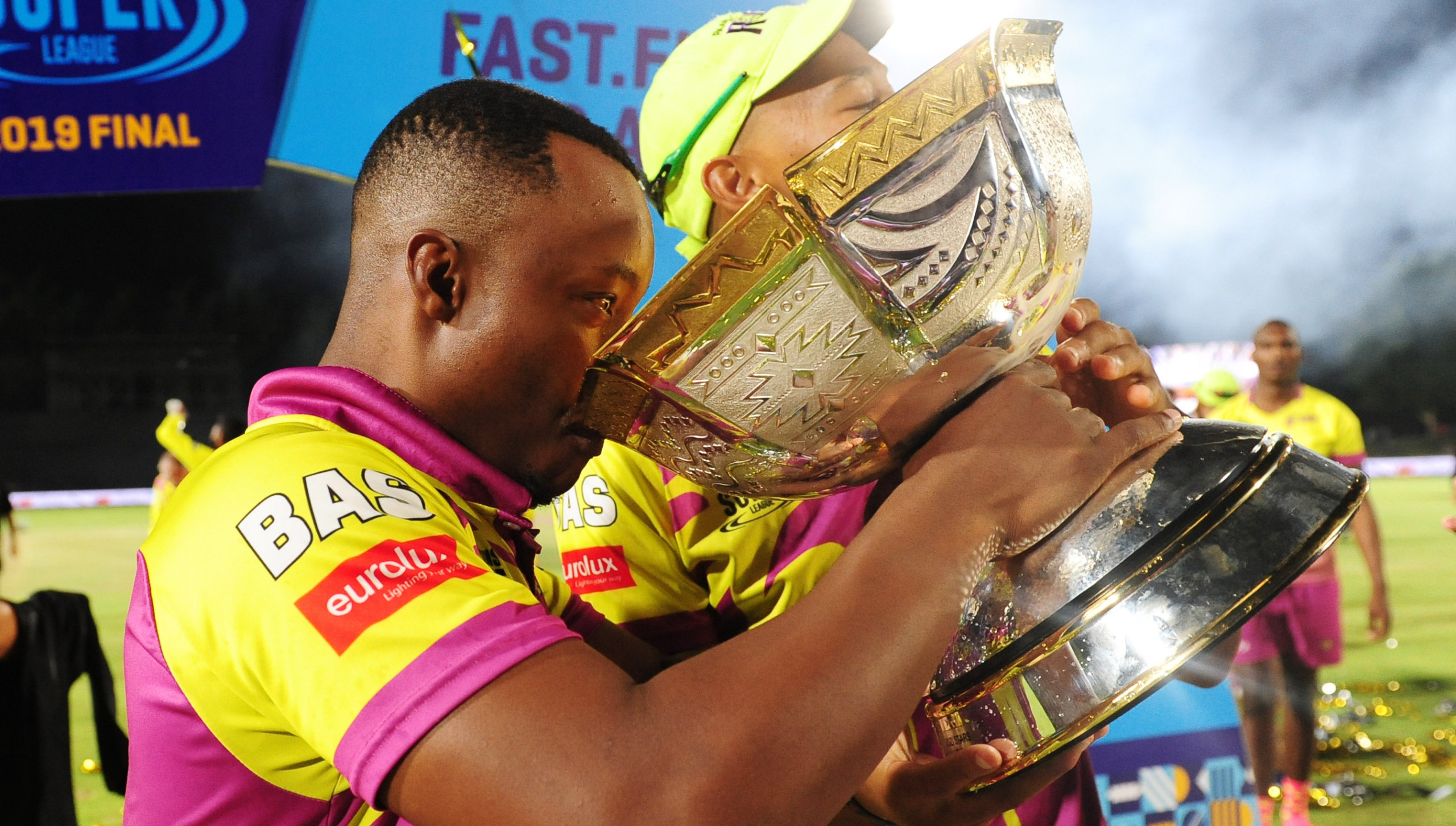
OFF THE FIELD WITH Mangaliso Mosehle
By Nabeelah Fakier
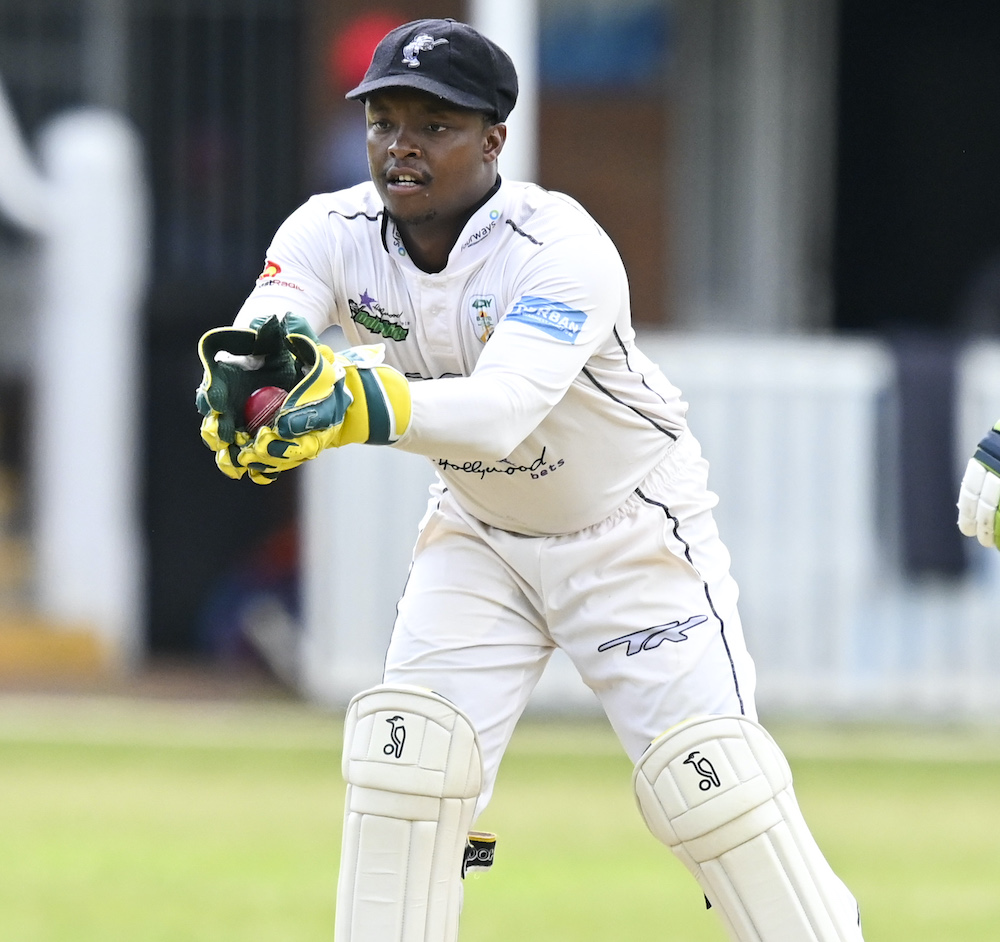
What have you been doing during the lockdown?
The early stages Lockdown was tough at the start, being in the house and not having much to do, but it was a great opportunity to reassess, about things I needed to work on, where I needed to grow and where I can get better – so as hard as it’s been enlightening. We were fortunate to start training early so it’s been good so far
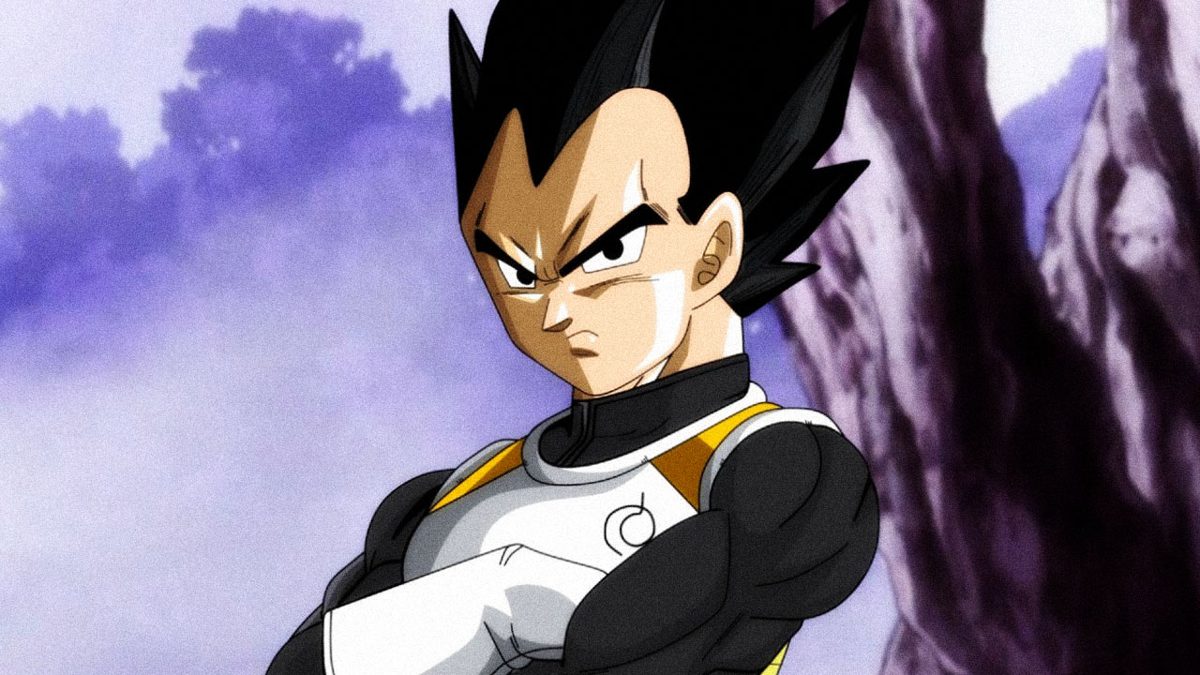
If you could have a superhero, who would you be and why?
I’d be Vegeta from Dragon Ball Z, because we have a similar hairline.
Can you cook? (What’s your favourite meal to cook)
I’m not a massive cook, but I had to learn since I moved out when I was young and I couldn’t keep up with take-aways. I’ve learnt how to make oxtail during the lockdown, I enjoy a braai too now and then but my favourite meal to make is prawn pasta.

Who’s your favourite wicketkeeper of all time?
I’ve got a list of keepers that’s I’ve always looked up too my top 5 would be Jack Russell, James Forster, Brad Haddin, Tim Paine and Raymond Jennings.
Who were your role models growing up?
I admired Jacque Kallis when I could bowl. Rusty Twala was my coach and hero.
What’s the best place in SA you’ve been to?
We once hiked in Transkei for pre-season, it was a tough experience but it’s one of the most beautiful and peaceful places I’ve been to.

What’s the first thing you’d do (that you couldn’t do) when this pandemic is over?
Probably have a braai with all my closest mates.
What’s your favourite series?
I’m not really a series fan , but I enjoyed Ray Donovan.
Aside from oxygen, what’s the one thing you cannot live without?
My keeping gloves! Joking, probably water.
Top 3 most played songs on your playlist right now?
Cody Carnes - Nothing else, Eshon Burgundy – I felt that and Jeremy Riddle – Holy Ground.
What would you say is the most memorable moment of your career thus far?
I can name two. My last season playing for the Titans and being Man of the Match in a T20 final against the Dolphins and the most important one was playing my first game for South Africa and having my whole family there.
A bowler that you would/would’ve love to face? (Past or present)
It has to be Michael Holding.
Have you studied? (If so, what did you study & qualify in)
I’ve done a short course in facilitating and I’ve just enrolled in another course in psychology and mentoring.
The Paarl Rocks had a great season last year, do you have any funny stories to share about yourself or the guys & your time there?
The past two years with Paarl have been fantastic, I’ve enjoyed being a part of the team and Paarl does hold a special place in my heart, as that’s were I played well during my U19 days to start my career as a professional. My funny story has to be Kerwin, for being awkward during the photo shoot.
What is your favourite sermon?
Lately I’ve been listening a lot to Pastor At Boshoff and Glen Schröder, but if I had to mention one by him I thing it’s called “It’s in the middle”.
Which Rugby teams do you support in Super Rugby & the Currie Cup?
I spent most of my time in Pretoria so I enjoyed watching Bulls, but I also like the Lions and their style of play.
What are your hobbies?
I love golf, I coach a bit at schools , I DJ now and then at home and now that I’m in Durban I like sunrise/sunset walks by the beach. (You can follow Mangi as he does Insta Live videos of him DJ-ing)
Where do you see yourself at the age of 45?
I’m very passionate about mentoring, teaching and inspiring the youth so I see myself in that space. I’m a strong believer in helping people and empowering them.

What’s the one quote/verse you live by?
I have this on my right foot, it’s been my favourite scripture since I got born again in 2012 – “Then he called the crowd to him along with his disciples and said:
“Whoever wants to be my disciple must deny themselves and take up their cross and follow me.
"For whoever wants to save their life will lose it, but whoever loses their life for me and for the gospel will save it. What good is it for someone to gain the whole world, yet forfeit their soul?” – Mark 8:34-36 NIV
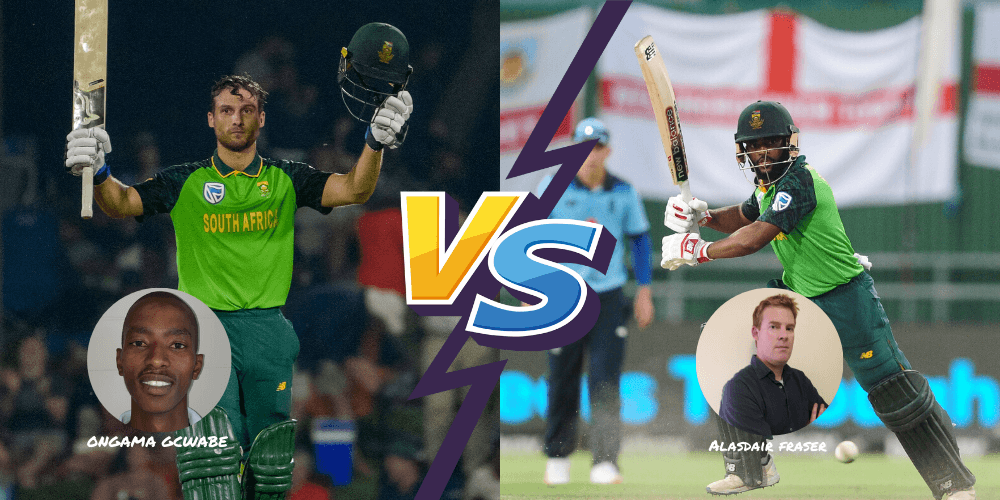
THE GREAT DEBATE: WHO IS QUINTON DE KOCK’S IDEAL OPENING PARTNER?
ONGAMA PICKS JANNEMAN MALAN
I’m going with Janneman Malan because he is a man for all occasions.
If you bat him up the order with Quinton de Kock, he can play the more explosive-partner role when Quinny doesn’t get going early on in the innings.
When Quinny gets going very well at the top then Janneman can just pick the gaps and rotate the strike to allow De Kock to have most of the strike.
In the middle stages of a T20 game, he’s shown already that he understands his game and that has the ability to keep knocking it around with an odd boundary in an over, keeping the run-rate around 10 to 11 runs an over and ride the wave of the first power play.
The more busy and explosive Janneman comes to life again when the game reaches the third powerplay stage. At this stage, he takes more of the outside-the-box mentality or thinking about his batting, negating the different skills of death bowlers.
He doesn’t swing the bat around, he plays smart, proper cricket shots.
This young man keeps performing this way in different conditions. Be it a coastal or inland wicket we know Malan can still go over the ropes with ease.
I must say, the flare of the youngster is hard to not to admire. The sense of urgency when required or the grit in high-pressure situations against tougher bowling attacks is a testament to the man’s character.
He and Quinny know each other very well because they batted together for two consecutive seasons for the Cape Town Blitz.
In both editions of the MSL, they dominated bowling attacks more often than not. They are a successful opening pair.
ALASDAIR PICKS TEMBA BAVUMA
Temba Bavuma must open the batting with Quinton de Kock in the T20s format.
Firstly let’s congratulate Janneman Malan. He is pure class but he hasn’t been in the Proteas T20 mix.
Rassie van der Dussen and Reeza Hendricks opened with De Kock in the T20s.
Let’s not confuse ourselves with Malan’s ODI form. Bavuma and De Kock combined well during the T20s against England. The latter never shared a decent partnership with Malan in the Aussie ODIs.
Bavuma and De Kock’s running between the wickets, coupled with a few lusty blows, was the perfect foil to England’s powerful bowling attack.
A lot of cricket has gone down in South Africa over the past few months and our white-ball batting stocks are on the up.
Injuries can often be cruel. Bavuma was beginning to assert himself as a likely candidate to partner his skipper at the top of the innings before his hamstring sidelined his progress.
The Proteas posted big totals in the series against England thanks to De Kock and Bavuma.
It’s fitting that De Kock and Bavuma’s international careers have followed a similar trajectory in the Test arena.
Their Lions connection goes back and during the England series, their synergy at the top of the innings shone through.
Gone were the shackles of the stress in the Test middle order as the duo played with great freedom and understanding.
Long may it continue.
Disclaimer: Cricket Fanatics Magazine encourages freedom of speech and the expression of diverse views from fans. The views of this article published on cricketfanaticsmag.com are therefore the writer’s own and do not necessarily represent the views of the Cricket Fanatics Magazine team.
ON LOCKDOWN SERIES: "Age doesn't determine seniority"
LEGENDS WITH RAVI: “The Mandela Trophy Centurion” with Dave Callaghan | Episode 12
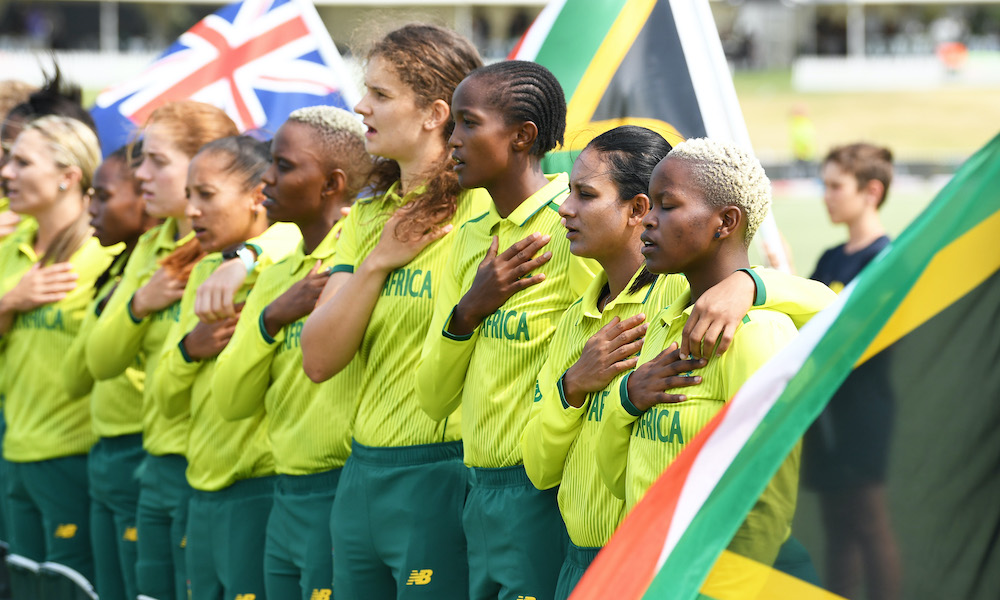
The future of women's cricket
By Naeemah Benjamin
There's no doubt that women's cricket has grown significantly over the years.
Katy Perry performing at the 2020 World Cup final before a sold-out crowd at the MCG is an indication of that.
What will South Africa notch up in 2022?
There's lots of positives and growth in this Proteas side. However, the uncertainties surrounding the team and when they'll take the field again is hindering their process. The coronavirus pandemic has been a major reason for that. Just how costly will this be.
The recent blows of 2020 came when they had to call off their series vs Australia in March, and later the government's strict measurements of no team travel forced them to pull out of their tour to England. A series of that calibre is massive. Not only from a financial perspective but also for the experience.
For the players to continue to gain experience, they need to be competing with the best. These tours matter because by the Proteas Women getting results in the big games like they have, it helps with momentum and self belief.
These players have matured and gained so much experience. They've had their share of heartbreaks but that can only make them stronger and better.
Our hearts were breaking while their tears were dripping in Bristol after their loss in the semi-final to England in 2017. So close, yet so far.
It was an expected World Cup result for most onlookers who were glued to their screens watching these ladies fight hard in every single game, with the underdog tag which was attached to that young Women's side. They won 4 games (including beating finalist India by a mammoth 115 runs), lost 2 and one was rained out.
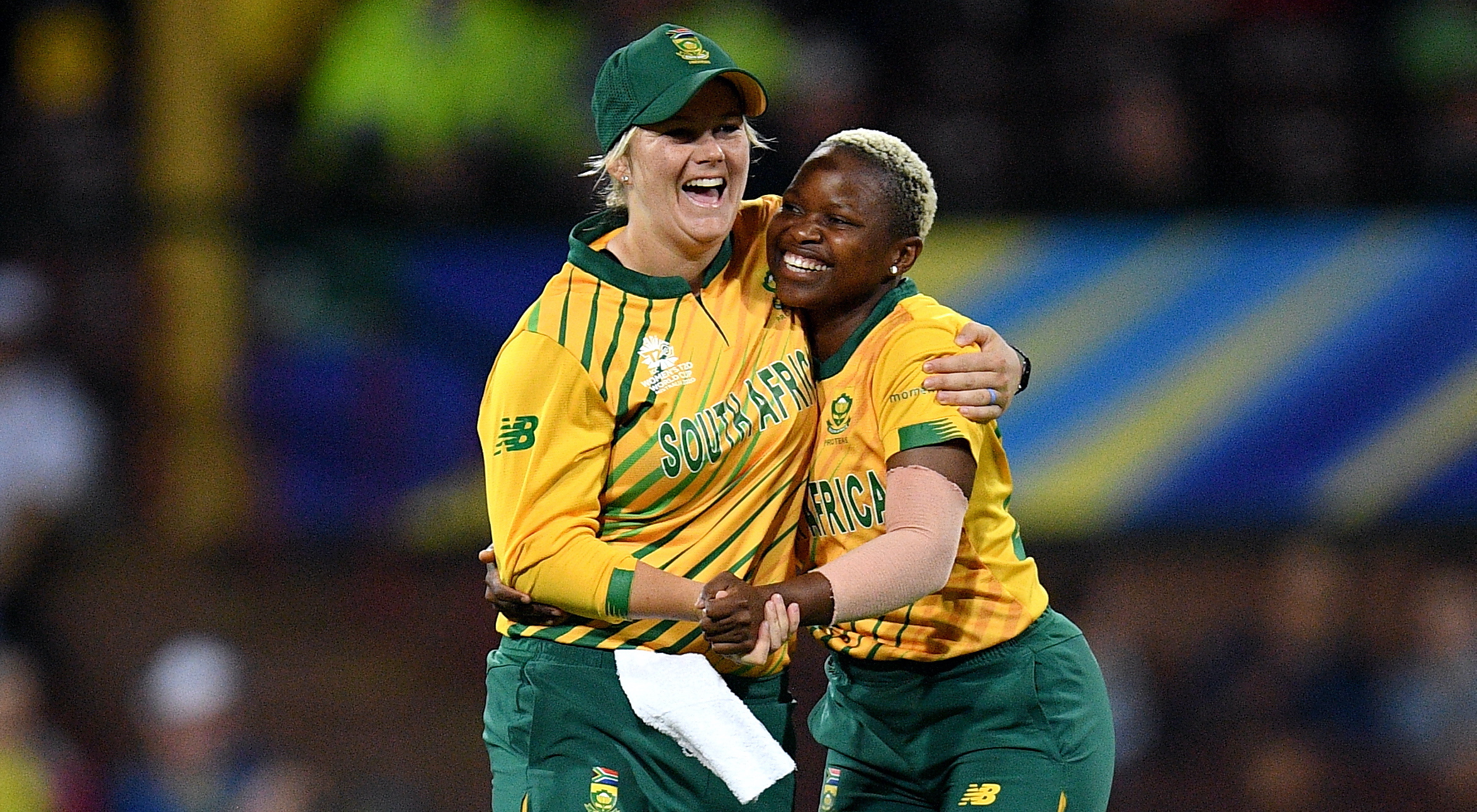
In January 2020, the Proteas ladies travelled to New Zealand and completely outplayed their counterparts to complete a whitewash over them and earn much needed ICC Women's Championship points to confirm their place at the next edition of the ICC event which was due in 2021. This has now been postponed to 2022 due to the coronavirus pandemic.
2022 is also the year of the next edition of the T20 World Cup set to take place in the rainbow nation.
Coming off another heartbreaking semi-final loss, this time against a star-studded Australia side in front of a packed SCG, the Proteas Women were totally up for the challenge and stunned most by beating England in their opening encounter for the first time in a T20 World Cup.
They then went on to beat Thailand and Pakistan to top the group and book themselves a semi-final berth despite their final game against West Indies being rained out.
They've proven they got what it takes to be a powerhouse in women's cricket. They can compete with the best.
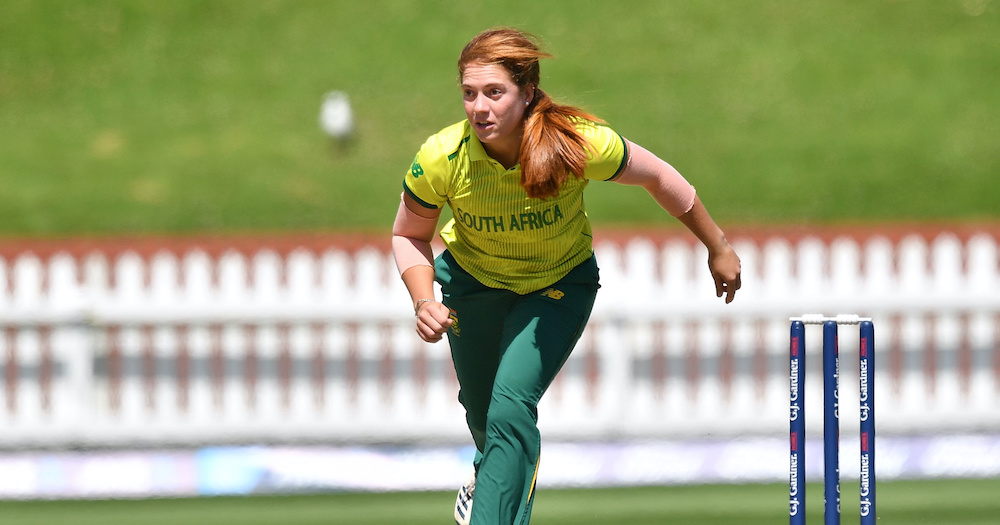
But what's next? Is enough being done to champion Women's cricket in South Africa?
Right now, the vision should be the next World Cups. The Proteas Women's team in terms of selection are pretty sorted. This group has been together for quite some time, they've grown and matured as a team.
But to get the results or silverware we all desperately need, the work leading up to tournaments needs to be put in, and not just by the players and coaching staff. Investments pay off in the long run.
This current group of Proteas Women players have endured heartbreak together, they've grown together and they showed us that "Always Rising" is more than just a logo or hashtag.
These women continue to punch above their weight and make strides, but to maintain their reputation and compete with the likes of Australia and England etc, they need backing from everyone – Media attention, fans, administrators, sponsors all need to get on board and invest and provide the necessary resources.
They need to play. They need their games televised. They need fans to come out and fill the stadiums. They need their stories told. A young aspiring female cricketer needs a source of inspiration to believe that it can be done.
Whenever you reach out to the players, the pride and passion for the game are there. You can see it on their faces or hear the excitement when they speak.
More importantly, we need to invest in the system in the provincial setup and prioritise the women's game. We need the pipeline to continue to produce quality players.
"It's people with the love of the game that will change the game because regardless of what they get, they still going to play because they love it and that's what we need more of.
"That's where we need the passion to be built from a young age. For girls to pick up a bat and ball and say I love cricket," Faye Tunnicliffe said exclusively on the Cricket Fanatics Podcast Show.
"If we can get cricket on the map for girls at a young age and get cricket normalised, that's where we'll win.
"If you look at a country like Australia their U19 players are contracted because they've been brought up in a way that cricket is normalised and it's normal to play cricket as a female."

Cricket in SA needs a TRC
By Alasdair Fraser
Given the serious predicament that CSA currently finds itself in, our cricket needs to come together in a constructive Truth and Reconciliation strategy for us to move forward.
It has been a tough couple of months for cricket fans as we wade through the mud that has been kicked up with several serious allegations and revelations coming to the fore.
While it is still early days in making a judgement or analysis, the fact of the matter is that a lot of our dark past has been ignored, which is why we find ourselves in this precarious position. There is a lot of hearsay, but we should not be surprised in the slightest.
As the late Nelson Mandela once said: “Sport has the power to unite us all” but we are more polarised than ever with highly emotive subject matter splashed all over social media. It hasn’t helped, however, that we have had no sport since late-March, and we’ve been forced to take a deep introspective look at ourselves.
As a teen growing up in 1994, I truly believed that the racial divide created by Apartheid was going to be mended and that previously disadvantaged South Africans would get the opportunities they deserved and to be treated equally. We would get through this together. I was intoxicated by the Rainbow Nation.
The dialogue, though, 26 years later is one that shows how far we are from achieving that goal of equality. In fact, it’s gotten worse and we are all in denial. Cricket in SA is broken. How naïve I was.
CSA doesn’t need a bandage for this gaping wound, they need reconstructive surgery if we are to come out of this stronger together.
The big elephant in the room has come in the form of the hornet’s nest being stoked by Alviro Petersen. The match-fixing saga has been bubbling away under the surface for a couple of years and it’s not going to disappear. Judgement was passed but clearly there is still a lot of hurt and unresolved issues.
Given that the Hansie Cronje match-fixing saga put a major long-lasting dent in our cricketing landscape – one which is still today very raw – it’s not surprising that there is still a lot of hurt and unresolved issues.
Everyone who is involved in our game needs to sit down together and come clean in an honest fashion. No agendas. No egos. Nothing. We can never go forward unless everyone puts their cards on the table to work on a common solution that is best for all South Africans in cricket. Otherwise, we will stay trapped in the past.
It is harrowing to hear the likes of key former Proteas Makhaya Ntini and Robin Peterson sharing their hurtful stories, which have been festering in their minds for decades – but it is enlightening to see them come forward and expose the dark underbelly of racism and lack of inclusiveness in our game.
READ: “THAT’S OUR GAME TOO”
Fifa has done anti-racism and Stop Racism in Football campaigns for decades, yet the likes of Mario Balotelli and Samuel Eto’o were often recipients of racial taunts and actions from European fans – often from their own supporters! Nothing has changed. You can do campaigns or get down on one knee till the cows come home. An open and honest TRC dialogue is the only solution here.
It’s a crying shame that the likes of Ntini and Petersen did not come out earlier during their playing days, however, you cannot blame them as the competitive nature of professional sportsmen is to preserve their image by not rocking the boat in order to maintain their presence in the national squad. We are talking about cricketer’s livelihoods here.
But now is the time to address all these issues with former and current people in cricket who all need to be on the same page – no egos, nothing – in working through the hurt and shame that has been a virus in our game. There will be tears, but it needs urgent attention.
Otherwise expect our cricket to be broken, racially divided, dishonest, and polarised for many decades to come. The next generation deserves better. We are the adults here. Let’s start now and lead by example.
Disclaimer: Cricket Fanatics Magazine encourages freedom of speech and the expression of diverse views from fans. The views of this article published on cricketfanaticsmag.com are therefore the writer’s own and do not necessarily represent the views of the Cricket Fanatics Magazine team.
FUTURE STAR Radar LIST
PLAYERS UNDER 23
Matthew Breetzke
Raynard van Tonder
Bryce Parsons
Jonathan Bird
Sinethemba Qeshile
Wandile Makwetu
Wiaan Mulder
Marco Jansen
Gerald Coetzee
Thando Ntini
Lifa Ntanzi
Lutho Sipamla
Jade de Klerk
Achille Cloete
Bonga Makaka
Lehan Botha
Duan Jansen
Luke Beaufort
Jason Niemand
Pheko Moletsane
Kgaudise Molefe
Khanya Cotani
Ruan Terblanche
Tiaan van Vuuren
Siya Plaatjie
Jean du Plessis
Akhona Mnyaka
This is a list of names we have compiled based on Khalid Mohidin's interaction with players over the last year. If you have names who you think will be on the selector's radar in 2023, let us know on social media.
Video Playlist
The Podcast Live Show:
Square-Leg Gully Live Show:
Magazine info
Editorial Director
Khalid Mohidin
IT and Technical Director
Faizel Mohidin
Contributors
Abhai Sawkar
Alasdair Fraser
Craig Stirton
Daniel Orsmond
Khalid Mohidin
Marc Jacobson
Naeemah Benjamin
Nabeelah Fakier
Nasri Alexander
Ongama Gcwabe
Ravi Reddy
Graphics
Khalid Mohidin
Mohammed Hoosain
Images
BackpagePix
Video Binge List:
On Lockdown Series
The Podcast Show
Legends with Ravi
